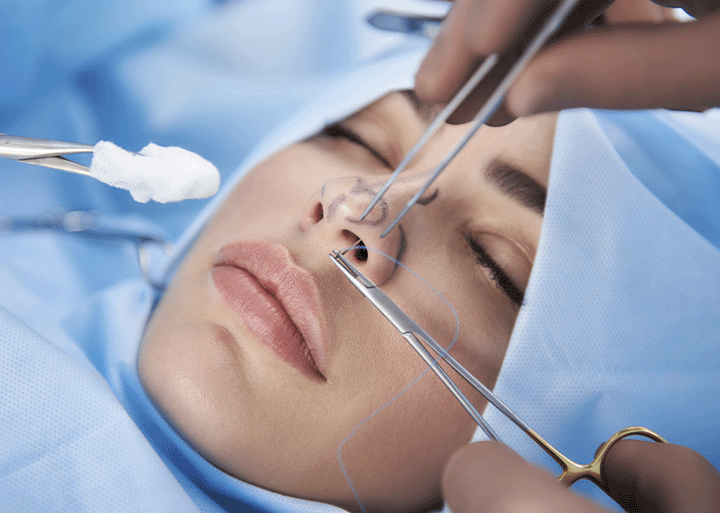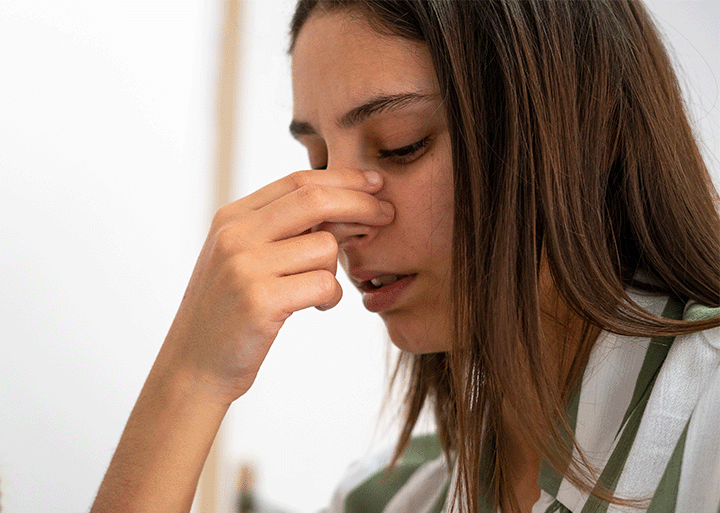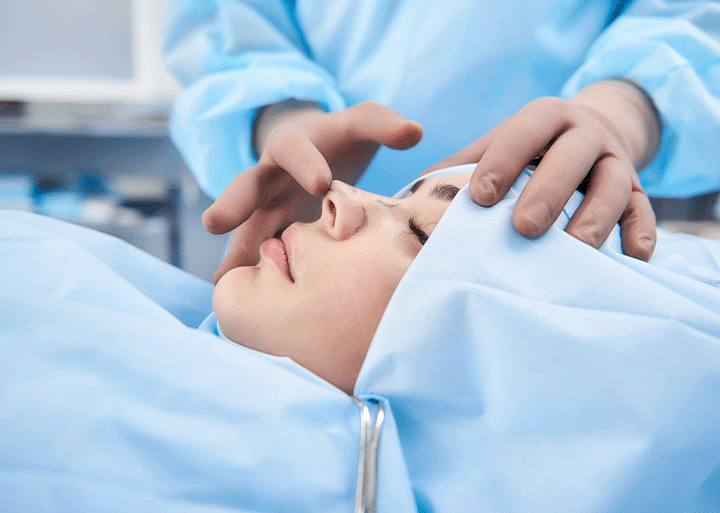
Septum deviation is the structure disorder and curvature of the nasal septum in the middle of the nose for different reasons.
Septoplasty is the name of the surgical operation that improves this problem in the nasal septum by arranging the nasal bone and cartilage tissue. It is also known as "septum deviation surgery". As part of this procedure, bone tissues that make breathing difficult are removed, cartilage is shaped and repositioned.
The nose, which acts as the first step of the external respiratory tract in humans, provides one of the most basic functions of the body, breathing. The bone and cartilage structure located in the middle of the nose and separating the two nostrils is called the septum, like a thin wall. Structural disorders in there directly affect the quality of life of patients. In septum deviation, which is one of the most special nose surgeries, you can rely on Assoc. Dr. Fatih Mehmet Hanege's competence and experience the privilege.
How is Septoplasty Surgery Performed?
Establishing the correct diagnosis is important for septum deviation as well as for any surgical procedure. During the first examination between the patient and the doctor, the structure of the septum is checked together with the general health screening. For this, micro cameras can be inserted into the nose and radiographic imaging methods can be used.
After this stage, the anesthesia to be used is determined according to the decision of the doctor and the patient's consultation. In septoplasty surgery were mostly performed under local anesthesia in the past, general anesthesia is often preferred for the comfort of patients today.
Septum deviation surgery starts by making an incision through the nose, so that there will be no scar under the nose. The tissues inside are reached. Excess bone tissue is removed. If the problems in the cartilage are small-scale, it is intervened from the inside, if the deviation is advanced, it is taken out and reshaped and placed inside again.
The patient's curvature of the nose may not only be related to the components inside. With the help of septoplasty with the open technique, the nasal skin is lifted and the application is made in this way. The surgeon ends the surgery by suturing the incisions he made. If non-disappearing stitches are used, they should be removed within 1 week to 10 days. A silicone pad is placed in the patient's nostrils to control bleeding. This tampon is removed by the doctor 3-4 days after the deviation operation.
What are the Symtomps of Septum Deviation?
The most common sign of a deviated septum in people who are candidates for the surgery is unilateral or bilateral respiratory distress. If the patient has an infection, swelling may occur in the nasal tissues. Common complaints are also listed below:
- Chronic sinusitis, bronchitis, pharyngitis
- Snoring and sleep apnea
- Nasal obstruction
- Fluid accumulation in the ear
- Chronic nosebleeds
- Headache and post-nasal drip
Things to Consider After Septum Deviation Surgery
After the septoplasty operation, the patient is mostly kept under observation throughout the day. If no complications develop and the person does not experience any disability, they can be discharged. Doctors may prescribe pain relievers and antibiotics for prevention. It is recommended that the patient rest well for 2-3 days following the surgery.
After septoplasty surgery, the patient can usually go back to her/his life within a few days. The most important thing to be taken care of during the septum deviation recovery is to protect the person's nose against external factors. A blow to the nasal bone can reverse all the results of a successful operation.
If the patient has a problem with excessive bleeding, pus discharge, persistent pain or sense of smell after the surgery, he/she should consult a doctor without wasting time. After a good septoplasty operation, effects such as bruising and swelling are seen less.
In some patients, deviated septum and rhinoplasty are applied together. Aesthetic concerns also play decisive role here, and of course, it is a larger and more comprehensive operation. After this combined surgery, edema is seen in the nose and under the eyes of the person. During the septum deviation recovery, a certain loss of sensation may be experienced on the sutures. However, this is quite natural and passes by time.
In a surgery that you will undergo under the expertise of Assoc. Dr. Fatih Mehmet Hanege, the chance of success is very high, at least in rhinoplasty as well as in septum deviation. Hurry up to breathe more easily and have the nose you dream of. Please reach us via our contact information.




